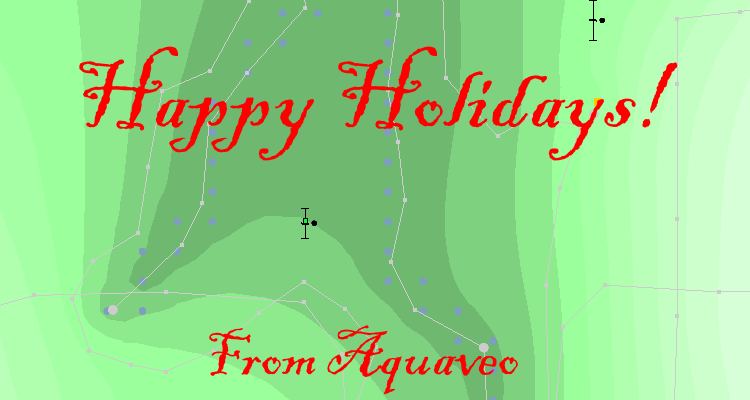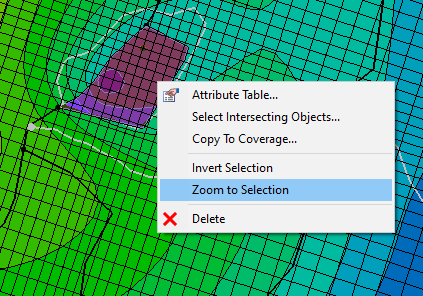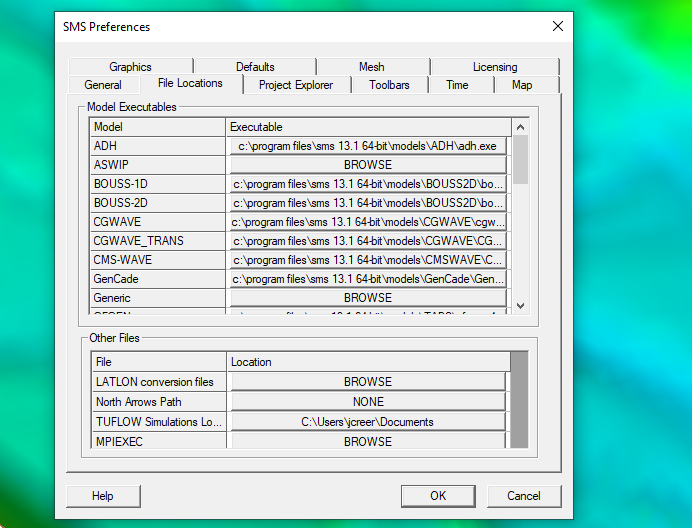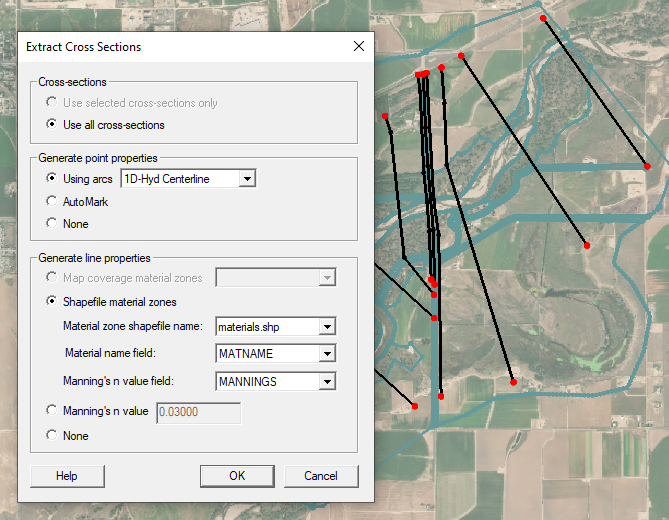Happy Holidays from Aquaveo!
By aquaveo on December 23, 2020Here at Aquaveo we'd like to wish you a great holiday season! We will see you in 2021!

Here at Aquaveo we'd like to wish you a great holiday season! We will see you in 2021!

With the release of GMS10.5 Beta, a few changes were made to how some selection functions work to make selecting objects in a project easier. A couple of the existing functionalities were improved and a new selection tool was added. This article discusses some of these changes.
The Invert Selection tool existed in earlier versions of GMS. The tool switches which objects are selected so that the objects that were selected are no longer selected and any object that was not selected is now selected. In earlier versions, this tool could be launched from the Edit menu. Starting in GMS 10.5 beta, the command to invert the selection can be found by right-clicking in the Graphics Window after selecting one or more objects.

Zoom to Selection is a new tool introduced in GMS 10.5 beta. This tool works by selecting an object in the Graphics Window. Then right-click the object to find the Zoom to Selection command. Using this command will zoom in on the selected object so that it fills the Graphics Window.
To go along with the change of having the Invert Selection and Zoom to Selection commands as part of the right-click menu for map tools, a change was made to what happens when the right-click menu was invoked. Previously, invoking the right-click command with a map tool by clicking in an empty part of the Graphics Window caused any selected objects to become unselected. In GMS 10.5 beta, map objects are not unselected when right-clicking in an empty spot of the Graphics Window. Instead, the new right-click menu will appear.
Previously, when an object was selected and you held down the Shift key, if you selected an empty part of the Graphics Window, your selected object would become unselected. In GMS 10.5 beta, objects no longer become unselected.
These are a few of the changes to selecting objects in GMS 10.5 beta. Try out the GMS 10.5 beta today.
GMS, SMS, and WMS (collectively known as XMS) all make use of numerical models for the final simulation run. These numerical models include MODFLOW, ADCIRC, SRH-2D, GSSHA, HEC-RAS, etc. These numerical models are not developed by Aquaveo, but the XMS software does provide an interface for using these models. This article will discuss more about how the XMS software integrates with these numerical models.
XMS will allow you to import all of the starting data and define all the parameters for a numerical model simulation. After the project has been built in XMS, XMS will export all of the files needed for the model run. XMS will then access the numeric model executable and launch the numerical model to run your simulation.
If the numerical model fails to run, there sometimes can be an issue with the numerical model executable. Typically, you will receive a warning message stating the model executable can’t be found. When this happens there are two ways to resolve the conflict.
The first is to click the browse button on the warning dialog and browse to the location of the model executable. Select the model executable and simulation will start running. In most cases, the model executables are located in a folder called models located in the locations where the XMS software has been installed.
The second method is to make certain the path to the model executable location has been correctly in XMS. This is done by going the Preferences dialog (use the Edit | Preferences command). In the Preferences dialog, there is a tab call either Files or File Locations. On the Files tab is a list of the available numerical models and where XMS is accessing that executable for the model. From here, you can change the file path to point to the correct location of the model executable.

Often when the model executable cannot be found the cause is one of a few common issues. One is that the path location was not correctly set when XMS was installed. Another is that the numerical model was not installed correctly. And another is that you may have been using a custom installation of the numerical model software with the model executable in a location where XMS is not looking.
Also note that some numerical models require multiple executables. Often this is a pre-processor that has its own executable. Make certain that the file path is correct for all executables used by the numerical model.
Making certain the correct model executable can be found by XMS can make running your model simulation a lot easier. Check out all the available numerical models availing in XMS today!
With the release of SMS 13.1 beta, a significant number of tools have been added for working with cross sections. These tools allow you to have more control over importing cross section databases and how you can work with cross sections in SMS.
Earlier versions of SMS have allowed you to import a cross section database and provided the cross section and centerline coverages. This lets you create a basic 1D model in SMS. SMS 13.1 expands on this functionality.
The new cross section tools in SMS 13.1 include:

When working with these new tools in SMS 13.1 beta, there are a couple items to keep in mind.
The first is that when interpolating cross sections, check for overlapping cross sections after the interpolation process is complete. If you trim your cross sections before interpolating your cross sections, you may prevent some overlapping.
The next item to keep in mind is that before converting cross sections to a TIN, it is recommended that you manually clean up the cross sections. Cross sections that have overlapping sections, unnecessary segments, or poor location can cause errors in the TIN.
Finally, converting a shapefile to a centerline coverage can be slow. It is recommended to convert the shapefile to an area property coverage first. After converting the shapefile to an area property coverage, clean up the arcs on the area property coverage then convert the area property coverage to a centerline coverage.
Tutorial for using the new cross sections tools will be made available in the coming months. Until then,our technical support team can help provide guidance in using these new tools. Try out the new cross section tools in SMS 13.1 beta today!